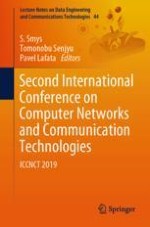This book presents new communication and networking technologies, an area that has gained significant research attention from both academia and industry in recent years. It also discusses the development of more intelligent and efficient communication technologies, which are an essential part of current day-to-day life, and reports on recent innovations in technologies, architectures, and standards relating to these technologies.
The book includes research that spans a wide range of communication and networking technologies, including wireless sensor networks, big data, Internet of Things, optical and telecommunication networks, artificial intelligence, cryptography, next-generation networks, cloud computing, and natural language processing. Moreover, it focuses on novel solutions in the context of communication and networking challenges, such as optimization algorithms, network interoperability, scalable network clustering, multicasting and fault-tolerant techniques, network authentication mechanisms, and predictive analytics.
